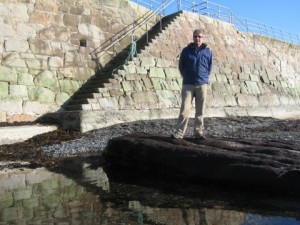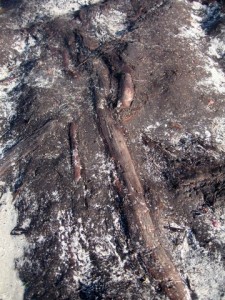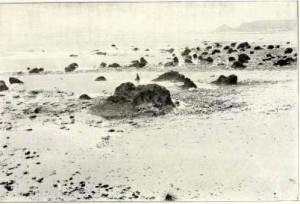Peat beds at St Ouen reappear
The peat beds in St Ouen’s Bay have reappeared following the huge swells and recent 12m tides.
The peat beds date from between 6073 – 5848 BC when what is now St Ouen’s beach was an area of freshwater marshland and fen that had been formed between the land and a coastal sand barrier.
Around 9400 years ago Dr. John Renouf estimates sea levels were around 20m lower than today and the Atlantic Ocean would have been some kilometres west of what is now St Ouen’s beach. Go back even further to around 2 million years ago and sea levels around Jersey would have been between 100m lower and up to 30m higher than today as a result of the waxing and waning of the massive ice sheets during the ice ages.
As the sea levels rose so the area we now regard as the beach would have been inundated. The woodlands of oak, hazel and birch along with the peat deposits were buried beneath the sands and tides. What might once have been forest vanished beneath the waves.
The peat deposits at St Ouen are full of organic, loess-type soil similar to that you would find under an old pine forest. You can also see root systems and the bases of tree trunks. Species include oak, ash, hazel, elm and pine.
What is surprising is just how much erosion has taken place since the big swells last week. Usually the sand is close to the last upright of the railings on the steps. I expect that the next big storm will return the beach to a higher level.
It’s worth having a closer inspection of the peat beds. Keith found what looks like a small embedded flint chipping which was still sharp and a 1950 “Half Crown” laying in a shallow depression on the peat. Please don’t go digging into the peat as it is quite fragile.
A fascinating 1906 photograph by Joseph Sinelshows the ancient trunks and roots of trees visible in St Ouen’s Bay.
More photos are on our Facebook page.




